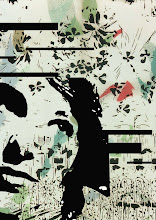In designing this unit of work I aim to link my philosophy of teaching pedagogy with learning outcomes and assessment. This will ensure a structured course offering the best teaching practice and learning opportunities.
As part of developing a commitment to study, Caroline Chisholm Senior Campus structures topics of Key Learning Areas into Work Required Units. Students and parents read over the unit outline and sign in understanding that they will make every effort to be active in class and complete the unit. It has become apparent that setting up networks of communication with parents is a significant factor in student motivation and behaviour. This is evident in research conducted by Rosenburg and Jackman (2003), with 'collaborative teams work[ing] together...form consensus on a positive and supportive school-wide approach to behaviour management for all children.' With the school policies and the results of this research in mind on behaviour, I have developed and Work Required Unit for my Year 7 class.
Work Required Unit - Elements and Principles of Design: Art Around Us.
Key Learning Area: Visual Arts
Year Level: 7
Duration: 4 Weeks
Teacher: Miss Sivell
Description: During this unit students will explore the Elements of Design, focusing on Line, Shape, Colour and Form. They will also be introduced to principles of Repetition and Contrast and how they relate back to the Elements of Design. Students will create a number of artistic works using a variety of media and techniques, including ICT.
Learning Outcomes:
Students will have opportunities to understand and learn about:
- 7.EA.1 - The ways in which artists develop ideas and feelings through artistic works.
- 7.EA.4 - Techniques for safe practice appropriate to the art form (e.g. warming up, safe use of equipment).
- 7.EA.6 - Experiment with skills, techniques and materials to produce artistic works in particular styles and mediums.
- 7.EA.8 - Discuss the different ways artistic elements and concepts are used to convey meaning.
Interdisciplinary Outcomes:
Students will have opportunities to inquire and create with Information and Communication Technologies:
- 6.EA.4 - Use ICT as a learning tool to support thinking and to analyse and creatively represent new understandings.
- 6.EA.5 - Make creative choices when selecting and using iCT, including combining a variety of media.
Students will have opportunities to contribute to group effectiveness:
- 5.EA.2 - display cooperation and flexibility in allocating and undertaking varying roles and tasks in groups
- 5.EA.3 - act in ways that respect and support the ideas and feelings of others (e.g. fair play, consideration, encouragement, peer facilitating)
At the conclusion of the four-week block students will have learnt - Student Outcomes:- The Elements of Design – Line, Shape, Colour and Texture.
- The Principles of Design – Repetition and Balance.
- Use different techniques and mediums, including ICT tools, to create artworks that incorporate the Elements and Principles of Design.
- Plan and Develop ideas to create artworks as collaborative groups.
- Use correct terminology to critique their own work and others artworks
Assessment Tasks:
- Line, Shape, Colour and Texture worksheets 20%. Assesses outcomes 1, 2 and 3.
- Line and Colour Artworks For Comic 40%. Assesses outcomes 1, 2, 3 and 4.
- Self-Evaluation Task on work complete din the four weeks 10%. Assesses outcomes 5.
- Active participation in group-work and visual diary 20%. Assesses outcomes 4.
To Complete This Unit Successfully You Must:
- Attach this WRU to your diary.
- Complete all class notes .
- Practical work completed and submitted on or before the due date unless otherwise negotiated with teacher.
- Responsible use and maintenance of equipment.
- Work independently and cooperatively in class.
- Respect the work of your peers.
Student and Parent Responsibility:
I have read and understood the requirements of this unit.
Student's name: Student's Signature:
Parent's Signature: Date:
References:
Jackman, L.A. & Rosenburg, M. S. (2003). Development, Implementation and Sustainability of Comprehensive School-Wide Behaviour Management Systems, Intervention in School & Clinic, 39(1), 10-21. Retrieved from http://web.ebscohost.ezproxy1.canberra.edu.au


